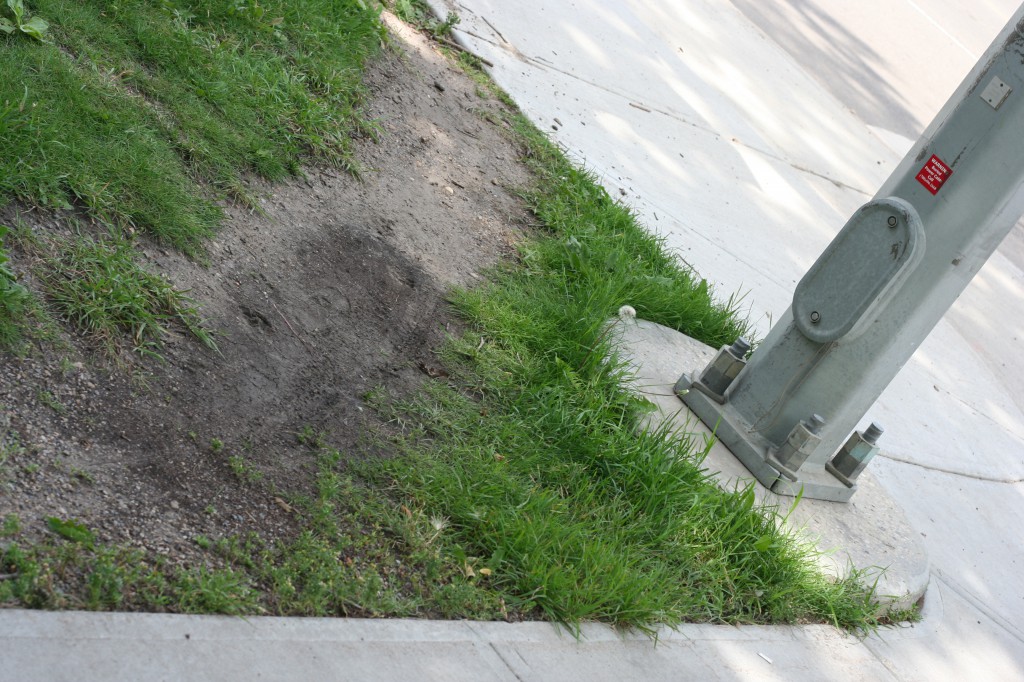you may recognize some of the ideas in this narrative from earlier blog posts – proof that my blogging strategy is working!

Is part of the appeal of a certain route the fact of the path itself? Is it the visible line that makes the route desirable? Would we think to scramble down a steep slope to the river’s edge if it wasn’t evident that someone else had been there before, that someone else had marked the way as worthwhile?
Two roads diverged in a wood, and I –
I took the one less travelled by
-Robert Frost
The allure of less travelled paths. Is that what we’re following when we leave the sidewalk in favour of a desire line? The one less travelled by? Or are we in fact opting for a route that’s more visibly travelled? Are desire lines attractive because they are travelled by, and because we can see that fact? When we leave the sidewalk for a desire path, which road are we taking?
Two roads diverged in a yellow wood,
And sorry I could not travel both
And be one traveler, long I stood
And looked down one as far as I could
To where it bent in the undergrowth;
Why, here, do we see two roads? Why did we build the second, more primitive one, with all the labour of passing footsteps? Or, if the second was the first, then why the paved path?
Then took the other, as just as fair,
And having perhaps the better claim,
Because it was grassy and wanted wear;
Though as for that the passing there
Had worn them really about the same,
In route, the two ways are equivalent. What then, draws a passerby to one path or the other?
And both that morning equally lay
In leaves no step had trodden black.
Oh, I kept the first for another day!
Yet knowing how way leads on to way,
I doubted if I should ever come back.
Is there a special intrigue in the grassy way, in the knowledge that by walking it, you are building it as well?
I shall be telling this with a sigh
Somewhere ages and ages hence:
Two roads diverged in a wood, and I—
I took the one less traveled by,
And that has made all the difference.
– Robert Frost, The Road Not Taken

